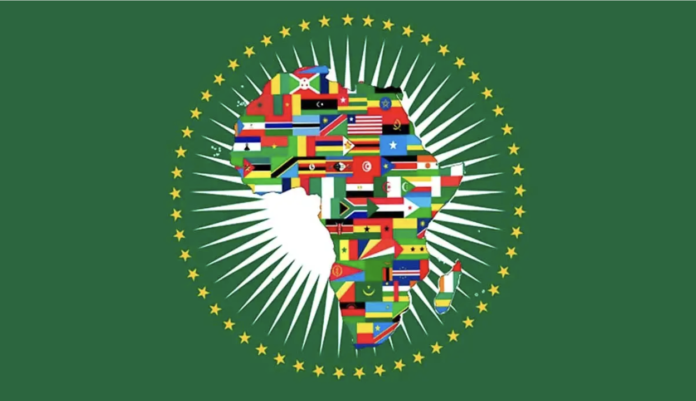On 13 June 2024, the Caribbean Community (“CARICOM”) and the African Union (the “AU”) signed a Memorandum of Understanding at Afreximbank’s 31st Annual meeting in Nassau, Bahamas. This MOU brings the two regional economic and political blocs one step closer to a Free Trade Agreement (“FTA”). Trade between these blocs has been historically low. In fact, trade with Africa amounts to only 3% of CARICOM’s trade. Nevertheless, initiatives such as the Afreximbank annual meeting show genuine intention between these Member States to build up the trade of goods and services.
Background to trade relations between CARICOM and the AU
CARICOM, created in 1973, envisioned the strengthening and coordination of trade and economic relations between its Member States. This treaty included principles of trade liberalisation and a common market for the Community. The trade relations were further enumerated and expanded upon in the Revised Treaty of Chaguaramas Establishing the Caribbean Community Including the Caricom Single Market and Economy (the “RTC”) in 2001. Article 78 of the RTC re-emphasises the objective of the full integration of Member States’ to form one unified market area. The RTC acknowledges that both intra-Community and international trade are necessary for the economic growth of CARICOM. Consequently, the RTC permits Member States to implement policies for external trade with groups of third States, like the AU, through the negotiation of trade agreements.
The African Union has similar aspirations. Established by the 1963 Charter of Organization of African Unity, which was later replaced by the Constitutive Act of the African Union in 2000, the purpose of the AU is promoted by the harmonisation of policies on economic cooperation. This Act is read together with the 1991 Treaty Establishing the African Economic Community and the 2019 Agreement Establishing the African Continental Free Trade Area (the “AfCFTA”). The latter agreement marks the formation of the world’s large free trade area. Another essential instrument is Agenda 2063 that intended that the establishment of the AfCFTA would strengthen Africa’s trade position on the global stage. According to the AU, Agenda 2063 represents “Africa’s blueprint and master plan for transforming Africa into the global powerhouse of the future.” Agenda 2063 proposes that the AU should form “dynamic and mutually beneficial links with her Diaspora.” This diaspora, of course, includes CARICOM.
As both regional blocs seek to increase trade internally, they are simultaneously seeking to establish stronger trade relations between them. There have been several high-level meetings to foster these relations. While the 2024 Afreximbank Annual Meeting and the 3rd AfriCaribbean Trade and Investment Forum and the 2023 Global Africa People-to-People forum provide recent evidence of the intention to foster stronger trade relations between the regional blocs, this has been years in the making. The 2005 South African, African Union and Caribbean Diaspora conference, the 2012 Declaration of the Global African Diaspora Summit, the 2015 AU Commission’s Citizens and Diaspora Directorate conference with CARICOM and the Caribbean Pan-African Network and the inaugural CARICOM-Africa Summit in 2021 all echoed the desire for CARICOM and the AU to work together.
The 2012 Declaration of the Global African Diaspora Summit, in particular, outlined a commitment to encourage the creation of an environment for CARICOM and the AU to “invest, work, and travel on the African continent and the Caribbean.” The Declaration also made clear that they were to prioritise areas such as economic cooperation, science and technological development.
What to expect from free trade
An FTA between CARICOM and the AU promises to encourage market expansion, increased trade and more investment opportunities for Member States and stakeholders, resulting in economic diversification and growth. It would have the added benefit of enhancing competition, through innovate technological transfer and economies of scales, i.e., a reduction of operating costs due to the increase of business. Undoubtedly, an FTA would also strengthen historic, cultural and political ties between the two regions.
A guide produced by the University of the West Indies’ Shridath Ramphal Centre identified the top products traded between the regional blocs, which are petroleum and related petroleum products, natural and manufactured gas, and iron and steel. In addition to the goods, establishing a free trade area would allow an expansion into trading other goods and services. These services are likely to include tourism exchange, provision of banking and technological services, and academic and profession exchanges and services.
At the same time, businesses will presumably be concerned with the vexing problem of logistical issues that currently limit CARICOM-AU trade. Without recognition of these issues during the negotiation process, and without attempts to address them practically, the significant potential to increase trade between the regions may not see fruition.
Next steps for the Memorandum of Understanding
To date, the Memorandum of Understanding (the “MOU”) has been signed but there has been no indication of when the negotiations for the FTA will commence. With the increasing frequency of meetings, the setting up of trade missions in CARICOM and the AU and the newly signed MOU, it is clear that all eyes should remain on these two trading blocs because each step taken brings them closer to realising their envisioned growth in trade and connection of their growing economies.
By Ahmed Abdel-Hakam and Robert G Volterra, partners at Volterra Fietta
For further information, contact info@volterrafietta.com.




